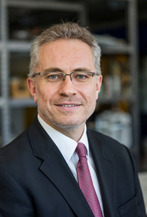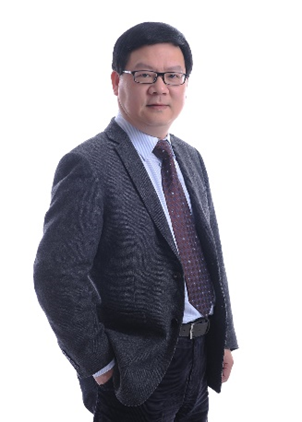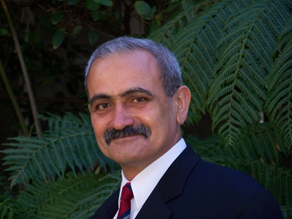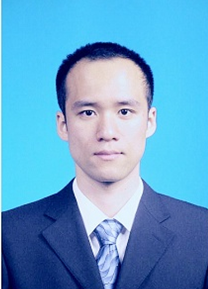
Professor Scott T. Smith
Southern Cross University, Australia.
Talk Title: FRP-strengthened RC Structures: Research, Design and Knowledge Gaps
Abstract: Experimental and numerical investigations over the last two decades have demonstrated the effectiveness of strengthening existing reinforced concrete (RC) structures with externally bonded fibre-reinforced polymer (FRP) composites. As a result of such research, design guidelines have been developed around the world. Despite such advances, there are still knowledge gaps that are hindering the more widespread uptake of the technology by asset owners and contractors. This presentation will provide an overview of design guideline development to date in selected regions of the world, followed by the identification of key knowledge gaps. The identification of such gaps will help inform impactful future research projects and continued design guideline development. A case study will also be presented that will discuss the synergistic effects of industry demand and research interests for anchorage devices and their incorporation into design guidelines. Such devices are important as they can ensure a higher strain utilisation of the FRP material. The author is of the opinion that the true potential of FRP composites can be unlocked once we are able to rationally design anchorage devices.
Biography of the Speaker: Scott Smith is Foundation Professor of Engineering and Dean of Engineering at Southern Cross University, Australia, and he has held this position since 2013. He previously held positions at the University of New South Wales, University of Technology Sydney, the University of Hong Kong and the Hong Kong Polytechnic University. Scott is a fellow of Engineers Australia, American Society of Civil Engineers, Hong Kong Institution of Engineers, and International Institute for FRP in Construction (IIFC). His research interest encompass the application of advanced composite materials to civil infrastructure and he is Senior Vice President of IIFC. Scott is also an Editor for Construction and Building Materials and an Associate Editor of the Australian Journal of Civil Engineering. Further details can be found here:
Further details at https://works.bepress.com/scott_smith/

Professor Lewei Tong
Tongji University, Shanghai, China.
Talk Title: Fatigue Behavior of Steel Reinforced Concrete Beams
Abstract: Steel reinforced concrete (SRC) beams have been widely used in civil engineering, but it is a new topic for the behavior of SRC beams under high-cycle fatigue loading. This paper reports on fatigue behavior of SRC beams based on experimental and numerical investigation. Fatigue tests were carried out on H-steel reinforced concrete beams, pure H-steel beams and pure reinforcement bars respectively. Key issues are discussed on failure modes, failure sequences, crack initiation, crack propagation and stiffness of SRC beam. A comparison of fatigue behavior between H-steel component inside SRC beams and pure H-steel beam has been made. The key parameters influencing the fatigue strength of SRC beams are identified, including the steel ratio of H-steel components, the steel reinforcement ratio of components and stud shear connectors. The fatigue failure modes of H-steel inside SRC beams were the same as those displayed by pure H-steel beams, but the former had significantly higher fatigue strength than the latter. Fatigue design (in terms of stress range – fatigue life (S-N curves)) is recommended for fatigue assessment of welded H-steel components and reinforcement components inside SRC beams, respectively. ABAQUS software was utilized to perform numerical simulation which considers the crack propagation in the H-steel using fracture mechanics theory and the damage evolution of the reinforcement and concrete. The predicted fatigue life of SRC beams was in good agreement with experimental data.
Biography of the Speaker: Lewei Tong was born in Shanghai, China in 1961. He is a professor in the Department of Structural Engineering, College of Civil Engineering, Tongji University in China. He obtained his Bachelor degree and Master degree in Mechanical Engineering from Shanghai Jiaotong University in 1983 and 1986 respectively, and Doctoral degree in Structural Engineering from Tongji University in 1995. He was a visiting professor in Department of Civil Engineering, Monash University in Australia from 2001 to 2002. Prof. Tong was the head of Department of Structural Engineering, College of Civil Engineering, Tongji University from 2009 to 2016. Now he is the vice director of Structural Stability and Fatigue Branch, China Steel Construction Society, and the vice director of Engineering Structures Committee of Shanghai Civil Engineering Society.

A/Professor Muhammad NS Hadi
University of Wollongong, Australia.
Talk Title: Influence of Longitudinal FRP Straps on the Behaviour of Circularized and FRP Wrapped Square Hollow RC Columns
Abstract: This paper investigates the influence of longitudinal CFRP straps on the behaviour of circularized and FRP wrapped square hollow reinforced concrete (RC) columns. Twelve square hollow RC specimens were prepared and tested under concentric axial loads, eccentric axial loads and four-point bending. The specimens were divided into three groups of four specimens. The specimens in the first group were the non-strengthened square hollow RC specimens. The specimens in the second group were circularized by adding concrete segments to the sides of the square hollow RC specimens. Then the circularized specimens were wrapped with two layers of CFRP. The specimens in the third group were strengthened by attaching one longitudinal CFRP strap on each side of the square hollow RC specimens. Then the specimens were circularized with concrete segments and wrapped with two layers of CFRP. The test results showed that circularization of the square hollow RC specimens enhanced the performance of the specimens in terms of ultimate axial load and ductility. The influence of the longitudinal CFRP straps was insignificant in increasing the ultimate axial load and ductility of concentrically loaded specimens. The presence of the longitudinal CFRP straps enhanced the axial load at yield of concentrically loaded specimens. The presence of the longitudinal CFRP straps enhanced the ultimate axial load and ductility of eccentrically loaded specimens. The contribution of the longitudinal CFRP straps to the ultimate axial load and ductility of the circularized square hollow RC specimens increased with the increase in load eccentricity. Also, the longitudinal CFRP straps increased the bending moment capacity of the circularized and FRP wrapped square hollow RC specimens.
Biography of the Speaker: Muhammad NS Hadi is an Assoc Prof at the School of Civil, Mining and Env Eng, University of Wollongong, Australia. His research interests are in concrete, FRP and optimisation. He earned his PhD from the University of Leeds, UK and his MSc and BSc from the University of Baghdad, Iraq. He is Fellow of Engineers Australia, Fellow of the American Society of Civil Engineers, Member of the Structural Engineering Institute, Member of the American Concrete Institute, Member of the International Association for Bridge and Structural Engineering, Member of Concrete Institute of Australia, Member of NSW branch, Member of International Institute for FRP in Construction (IIFC) and Life Member Australasian (iron & steel) Slag Association (ASA). He has successfully supervised 15 PhD students and 8 MPhil students. He is currently supervising 20 PhD students. He has attracted $1.8M of research funds alone and with collaboration with my colleagues. He has conducted 19 consultancies with the value of $85k. He has published 118 journal articles, 233 conference articles, 16 reports and three books. He has organised two international conferences and is member of organising committees of several international conferences. He has presented his research findings in over 30 countries.
Further details at http://www.uow.edu.au/~mhadi/

A/Professor Wei Li
Tsinghua University, Beijing, China.
Talk Title: Recent Research Progresses on CFDST Structures
Abstract: Concrete-filled double skin steel tubular (CFDST) member consists of inner and outer steel tubes with concrete in-filled in the sandwiched cavity. It inherits advantages of the common concrete-filled steel tube, such as high resistance, high stiffness and good constructability. It also has some other characteristics, such as lighter self-weight and better fire performance. It is found that the inner tube can provide a sufficient support to the sandwiched concrete, and the steel-concrete-steel interfaces can work together effectively under various loading conditions. The concrete-filled double skin steel tubes may provide a better design option when designing members of large cross-sectional profile. Therefore they have been used in some engineering projects in China. This presentation introduces some research progresses on the CFDST structures, including the tensile and compressive behavior of the member, the life-cycle performance of the member, the evaluation of member performance after fire and the fatigue behavior of T-joint.
Biography of the Speaker: Dr Wei LI holds a PhD in structural engineering from Tsinghua University with distinction in 2011. His doctoral thesis on steel-concrete composite structures was granted as one of the 100-best doctoral theses (nominate) in China. He is now an associate professor of the Department of Civil Engineering in Tsinghua University. His current research topics are in the fields of steel-concrete composite structures, specifically in the performance of innovative steel-concrete composite structures under earthquake, fire, impact as well as the life-cycle performance of composite structures. He has gained several national scientific research funds in China, and has published more than 50 international journal and conference papers. He is the editor for the special issue of IStructE journal Structures and acting as reviewer for several international journals. He has been involved in several key projects in China, such as Z15 tower in Beijing (528m), Zhoushan 220kV transmission tower (370m) and Tianjin transportation center. He also participated in several Chinese specifications for steel-concrete composite structures. He is now giving courses on the structural design for fire safety.